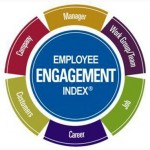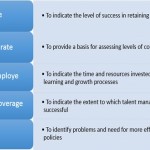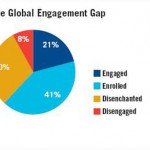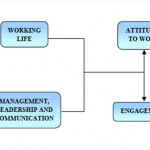Employee productivity measurement
A recent www.smartKPIs.com blog post, ‘Employee engagement and organisational performance’, outlined the approaches used by researchers to assess employee engagement and performance. The post concluded that as organisations show the relationship between engagement scores and bottom-line outcomes, everyone pays attention to the engagement index. Establishing this critical link between people and performance helps HR professionals prove that people-related interventions are a worthwhile investment (smartKPIs.com, 2010).
Acknowledgment for the need of reflection and consolidation in the field of employee performance measurement was also emphasized. Continuing this line of inquiry, a new question is explored in more detail below:
What is the cost of employees’ lack of productivity?
Siemens Communications launched an online survey in order to measure employee productivity and its impact on the organisation. Having 30,000 computer based workers as respondents, the results confirmed what many managers have suspected for years: office workers are wasting precious time by playing “telephone tag”, this costing the British business an estimated £2 billion a month.
The results of the online survey revealed:
- 70% of workers believe that up to a third or more of their calls do not get through to the right people first time. In fact, more than one-quarter believe that 50%t or more of their calls fail first time because people are in meetings, out of the office or simply engaged.
- the minimum amount of time wasted every day by every office worker playing telephone tag or making unsuccessful phone calls is 30 minutes. Siemens estimate that this 30 minutes alone equates to a national daily salary cost of some £83 million, or £22 billion in a working year and that is without the cost incurred on unsuccessful calls (Johnston, R, Jones, P, 2004).
smartKPIs.com contains popular Key Performance Indicators (KPIs) examples used in organisational efficiency and effectiveness reflecting the results achieved by the workforce as per the set objectives. For further examples of KPIs focusing on workforce productivity and achievement of individual performance plans, explore the Efficiency and effectiveness KPI examples section of the library of KPI examples available on smartkpis.com (smartKPIs.com, 2010).
References:
- Johnston, R, Jones, P 2004,’Services productivity: Towards understanding the relationship between operational and customer productivity’, International Journal of Productivity and Performance Management, Volume 53, Issue 3, pp. 201.
- smartKPIs.com 2010, Efficiency and effectiveness KPI examples
- smartKPIs.com 2010, Employee engagement and organisational performance

Tags: Human Resources performance, Performance Measurement, Siemens






